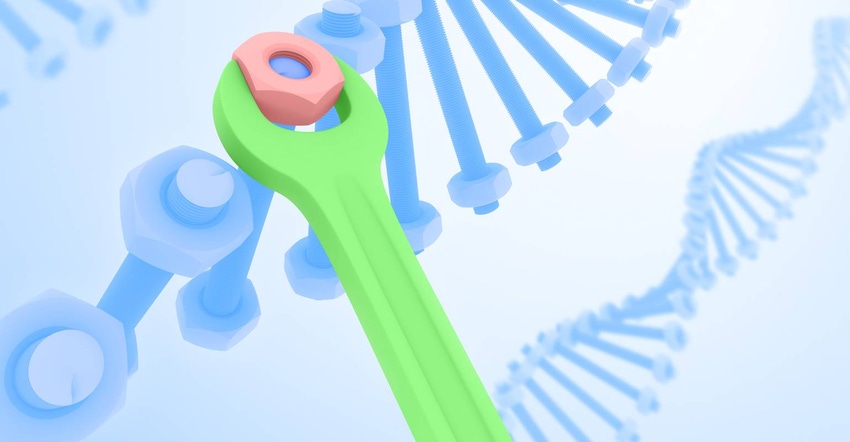January 25, 2017

Gene editing is becoming part of the general vocabulary of plant science as companies and researchers fine-tune the technology and start showing the potential for the tech. Of course, that also means the government needs to catch up with relevant regulation that help assure the safety of these products. Both USDA and the Food and Drug Administration have issued draft recommendations or sought comments recently on these new tools for improving food crops.
And the news is good. There appears to be a realization that if you knock out a gene or suppress a gene in a corn plant it's still a corn plant. While genetic engineers have long argued that even the addition of external DNA into corn didn't change it from being corn, a Bt gene in a corn plant still meant "transgenic." And these products are highly regulated.
With gene editing it's possible to find – in the complex genome of plants or animals – ways to turn off or turn on genes to achieve a desired outcome. As we increase our knowledge of the genome the potential is there – but how should it be regulated. Recently USDA released a proposed rule-making notice related to plant breeding innovation and the seed community was happy with the news.
In a statement from the American Seed Trade Association, Andy LaVigne, president and CEO said: "The farm and food value chain is committed to innovating in a responsible and sustainable way. We look forward to continuing these conversations with the Trump Administration to ensure sound policy that fosters continued innovation and promotes the movement of seed and other agricultural products around the world."
ASTA has a policy that states plant varieties developed using these newest techniques should not be regulated differently if they are similar to, or indistinguishable, from varieties that could have been produced through earlier breeding methods. Plant breeding has been evolving in its specificity for 10,000 years. These new techniques, in many cases, just bring laser precision to the process and speed up the potential for improving productivity.
Regulatory framework
USDA regulates the seed industry, FDA regulates the food that comes from plants and animals. At the same time, USDA released its rule-making report, FDA also announced plans to seek comments on new plant varieties developed through gene editing. That agency appears to be remaining consistent in its approach that goes back as far as 1992, and acknowledges in its information request that some approaches to gene editing result in plants that could have been achieved by more "traditional" breeding methods.
ASTA noted it is encouraging FDA to coordinate its work with USDA to provide "consistent, clear and science-based policy" across the U.S. government. And the association is working to have both agencies actively engage with trading partners around the world as the rulemaking process moves forward.
The plant breeding community has a long history of using a range of tools to improve plants. In that traditional approach, before genetic technology advanced this far, there were techniques like chemically or radiation-induced mutagenesis or hybridization that worked to help improve genetics. Even targeted selection can play a strong role in improving plants. But these new techniques can do the same thing in a lot less time, and with greater certainty of the desired outcome.
If geneticists figure out the gene combinations that can boost yield but leave behind undesirable traits like lodging or disease susceptibility, that can have a marked improvement in yield and crop performance in a variety of conditions. The technology also holds the promise for developing high-yielding crops for developing countries, creating disease resistant sweet potato or plantain to boost yields there too. The promise to helping meet world food needs can't be underestimated.
Sure, we started down this biotech road with input traits to protect already created yield potential (note that this year's top corn yield from Randy Dowdy was 521 bushels per acre for corn). Add in the ability for the plant to boost yield further through selective editing and higher corn yields will be even more common. And the tools can also be used on more direct food crops like fruits and vegetables to solve problems too.
This technology is just getting rolling. It's good to see that regulators appear to know they must keep up. Let's also hope they, and the public commenters, also keep an open mind.
About the Author(s)
You May Also Like






